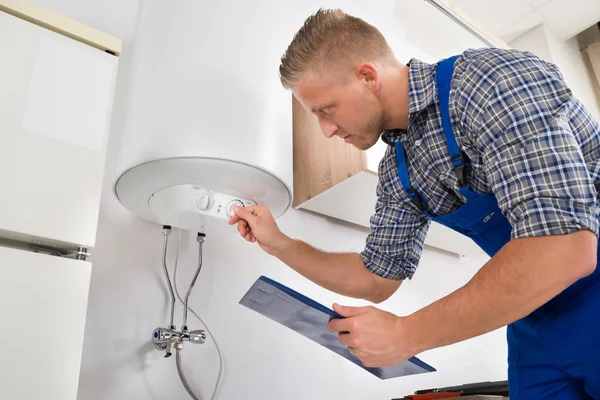Unveiling The Secrets: The Ultimate Guide To DIY Boiler Service For Homeowners
In the realm of home maintenance, understanding the intricacies of your boiler system can be both empowering and cost-effective. "Unveiling the Secrets: The Ultimate Guide to DIY Boiler Service for Homeowners" is your comprehensive handbook to demystify the process of maintaining this crucial home appliance. This guide will equip you with the knowledge and confidence needed to undertake essential boiler service tasks on your own, ensuring the longevity and optimal performance of your heating system. From a detailed overview of boiler types to step-by-step instructions for routine maintenance and troubleshooting, this guide is tailored to empower homeowners with the skills needed to keep their boilers in peak condition.
Homeownership comes with responsibilities, and tending to your boiler is a key aspect of maintaining a comfortable living environment. This guide goes beyond the basics, providing insights into advanced DIY techniques and addressing common boiler issues. Whether you're a seasoned DIY enthusiast or a homeowner looking to take a more hands-on approach, "Unveiling the Secrets" promises to unravel the mysteries of DIY boiler service, allowing you to become the steward of your home's warmth and efficiency.
Understanding Your Boiler System
Know Your Boiler
Before diving into the DIY service, it's crucial to understand the basic components of your boiler system. Boilers come in various types, including combi boilers, system boilers, and conventional boilers. Each type has specific features and functions. Familiarize yourself with your boiler's manual to understand its unique characteristics.

Safety First
Safety is paramount when dealing with any home appliance, and boilers are no exception. Before starting any DIY service, ensure the boiler is turned off and has cooled down. Familiarize yourself with the emergency shut-off valve and gas supply valve. Additionally, wear appropriate safety gear, including gloves and eye protection, to prevent injuries.
DIY Boiler Service Steps
Visual Inspection
Start by visually inspecting your boiler for any signs of damage or wear. Look for leaks, rust, or corrosion on the exterior. Check the pressure relief valve and piping for any issues. If you notice any abnormalities, it's crucial to address them promptly or seek professional help.
Inspecting the Pressure Relief Valve
The pressure relief valve is a critical safety component of your boiler. Lift the valve gently to release some water, ensuring it operates correctly. If the valve does not release water or is leaking, it may need replacement, and it's advisable to consult a professional.
Cleaning
Regular cleaning is essential to maintain the efficiency of your boiler. Dust and debris can accumulate over time, hindering its performance. Turn off the boiler and use a soft brush or vacuum to clean the exterior surfaces. Take care not to damage any components during the cleaning process.
Cleaning the Burner and Heat Exchanger
Remove the burner cover and clean the burner using a brush or compressed air. Inspect the heat exchanger for any signs of soot or corrosion. If significant buildup is present, consider hiring a professional technician for a more thorough cleaning.

Checking the Water Level
Adequate water levels are crucial for the proper functioning of your boiler. Consult your manual to locate the water level indicator and ensure it falls within the recommended range. If the water level is low, use the boiler's manual to add water following the manufacturer's guidelines.
Bleeding Radiators
If your boiler is part of a central heating system, bleeding radiators is an essential step. Air can accumulate in the radiators, reducing their efficiency. Use a radiator key to open the bleed valve slightly until air stops escaping and water starts flowing consistently. Close the valve promptly to prevent water leakage.
Advanced DIY Boiler Service
- Descaling the Heat Exchanger: Remove scale deposits affecting efficiency using a descaling solution as per the boiler manual.
- Inspecting the Flue System: Ensure safe expulsion of combustion gasses by checking for blockages and performing a thorough inspection.
- Electronic Component Inspection: Examine the control panel for error codes, secure connections, and seek professional assistance for electronic issues.
- Identifying and Addressing Leaks: Locate and address leaks promptly, tightening loose connections or replacing faulty components as needed.
- Dealing with Strange Noises: Troubleshoot unusual sounds by bleeding radiators or consulting the boiler manual for guidance on persistent noises.
- Addressing Low Pressure: Maintain optimal pressure by adding water when needed, and seek professional help if pressure issues persist.
Common Boiler Issues and Troubleshooting
Identifying and Addressing Leaks
Leaks can occur in different areas of your boiler, such as the pressure relief valve, pump, or connections. Identify the source of the leak and address it promptly. Tighten loose connections or replace faulty components as needed. If you're unsure about handling leaks, it's best to consult a professional plumber.
Dealing with Strange Noises
Unusual noises, such as banging or whistling, can indicate issues with your boiler. Check for air in the system, as bleeding radiators may resolve the problem. If the noises persist, consult your boiler manual for guidance or seek professional assistance.
Addressing Low Pressure
Low boiler pressure can affect its efficiency. Consult your manual to locate the pressure gauge and add water if necessary. If you're unable to maintain the correct pressure, there may be an underlying issue that requires professional attention. Visit Tomlinson Energy for best boiler services in Australia.

